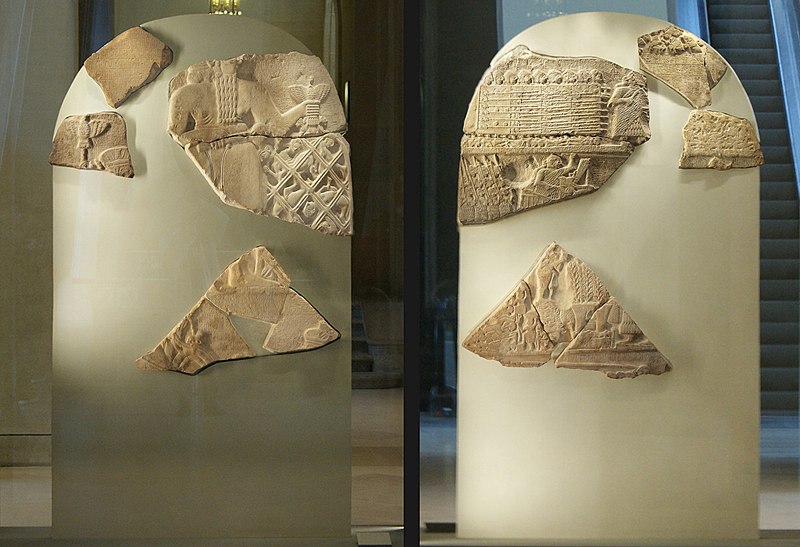Memorial plaques have been used for centuries to honor the deceased, commemorate important events, and memorialize historical figures. In this post, we'll explore the evolution of memorial plaques through the ages, including examples from different cultures and time periods.
Ancient Origins
 One of the oldest known examples of a memorial plaque is the Stele of the Vultures, a Sumerian monument dating back to 2400 BC. This stone slab, which was discovered in modern-day Iraq, depicts a battle scene and is inscribed with the names of the fallen soldiers. The ancient Egyptians also used memorial plaques to honor the deceased, often placing them in tombs or on temple walls. The Rosetta Stone, a famous Egyptian monument that was used to decipher hieroglyphics, is actually a memorial plaque that was commissioned by Ptolemy V in 196 BC.
One of the oldest known examples of a memorial plaque is the Stele of the Vultures, a Sumerian monument dating back to 2400 BC. This stone slab, which was discovered in modern-day Iraq, depicts a battle scene and is inscribed with the names of the fallen soldiers. The ancient Egyptians also used memorial plaques to honor the deceased, often placing them in tombs or on temple walls. The Rosetta Stone, a famous Egyptian monument that was used to decipher hieroglyphics, is actually a memorial plaque that was commissioned by Ptolemy V in 196 BC.
In ancient Greece, memorial plaques were commonly used to honor athletes and other public figures. The Greeks also used plaques to mark the boundaries of sacred land and to commemorate important events. One famous example is the Marathon plaque, which marks the spot where the messenger Pheidippides is said to have delivered news of the Athenian victory at the Battle of Marathon in 490 BC.
Middle Ages and Renaissance
Throughout the Middle Ages, memorial plaques were used in churches and cathedrals to honor important religious figures and donors. These plaques were often made of brass or bronze and were inscribed with the names and deeds of the individuals being memorialized. In the Renaissance, memorial plaques took on a more secular role, with plaques being used to mark the homes of notable individuals or to commemorate historical events.
Modern Times
Today, memorial plaques are used for a variety of purposes, including remembering loved ones, marking the sites of historical events, and honoring public figures.  They can be made from a variety of materials, including bronze, granite, and marble, and can be customized with personal inscriptions or designs. Many people choose to place memorial plaques in cemeteries, on headstones or grave markers, or in other outdoor locations, such as parks or gardens. Others opt to display them indoors, in churches, homes, or public buildings. If you're interested in purchasing a memorial plaque to honor a loved one, consider checking out Pixngifts.com. They offer a wide selection of sympathy plaques that are perfect for display in a home, inside an altar, or in an office.
They can be made from a variety of materials, including bronze, granite, and marble, and can be customized with personal inscriptions or designs. Many people choose to place memorial plaques in cemeteries, on headstones or grave markers, or in other outdoor locations, such as parks or gardens. Others opt to display them indoors, in churches, homes, or public buildings. If you're interested in purchasing a memorial plaque to honor a loved one, consider checking out Pixngifts.com. They offer a wide selection of sympathy plaques that are perfect for display in a home, inside an altar, or in an office.
No matter the purpose or material, memorial plaques have remained an enduring way to honor and remember the past.
Footnotes:
- "Stele of the Vultures." Ancient History Encyclopedia.https://www.ancient.eu/article/1493/the-stele-of-the-vultures/.
- "Egyptian Tombs and Burial Customs." Ancient History Encyclopedia. . https://www.ancient.eu/article/1144/egyptian-tombs-and-burial-customs/.
- "Rosetta Stone." Encyclopedia Britannica. https://www.britannica.com/topic/Rosetta-Stone.
- "Memorial Plaque." Encyclopedia Britannica.https://www.britannica.com/topic/memorial-plaque.
- "Marathon Plaque." Encyclopedia Britannica. https://www.britannica.com/topic/Marathon-Plaque.
- "Brass Rubbings." Khan Academy.
